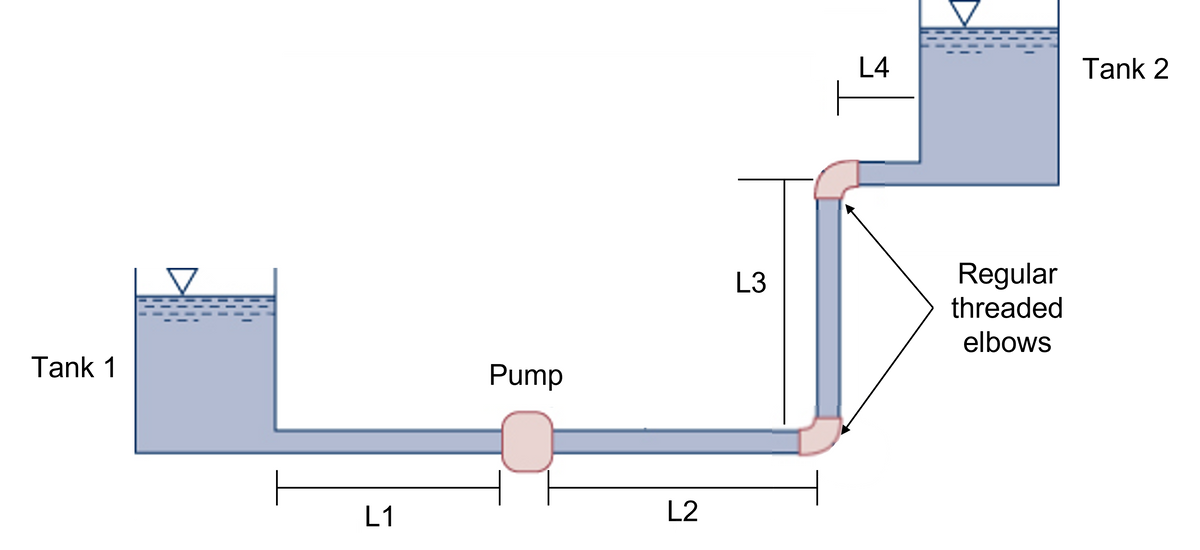The system in Fig 2 pumps water from a lower reservoir to a higher reservoir. The pipe diameter is 0.235 m and the pipe lengths are L1= 5 m, L2= 4.5 m, L3= 1.5 m, and L4= 0.6 m. The impeller of the centrifugal pump has a diameter of 0.55 m and operates at 850 rpm. The uniform blade height is 51 mm. The water enters the pump parallel to the pump shaft with a flow rate of 0.16 m3/s. Take viscosity as 0.00112 N s/m2. Fig Q2: Piping system to pump water between two tanks. Work to 4 significant digits. Enter all values using base units or their combinations, i.e. m, m/s, Pa, N. Do not use multiples as e.g. mm, kPa. You can use values with exponents, such as 0.12e3. a) What would be the shaft power required to turn the impeller if the exit blade angle is 31 degrees. b) Find the major losses in the system. Take the pipe Darcy friction factor as 0.055. c) Determine the difference in height between the water surfaces in the two tanks assuming that there are no losses within the pump.
The system in Fig 2 pumps water from a lower reservoir to a higher reservoir. The pipe diameter is 0.235 m and the pipe lengths are L1= 5 m, L2= 4.5 m, L3= 1.5 m, and L4= 0.6 m. The impeller of the centrifugal pump has a diameter of 0.55 m and operates at 850 rpm. The uniform blade height is 51 mm. The water enters the pump parallel to the pump shaft with a flow rate of 0.16 m3/s. Take viscosity as 0.00112 N s/m2.
Fig Q2: Piping system to pump water between two tanks.
Work to 4 significant digits. Enter all values using base units or their combinations, i.e. m, m/s, Pa, N. Do not use multiples as e.g. mm, kPa.
You can use values with exponents, such as 0.12e3.
a) What would be the shaft power required to turn the impeller if the exit blade angle is 31 degrees.
b) Find the major losses in the system. Take the pipe Darcy friction factor as 0.055.
c) Determine the difference in height between the water surfaces in the two tanks assuming that there are no losses within the pump.

Step by step
Solved in 3 steps with 1 images









